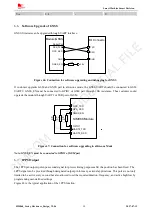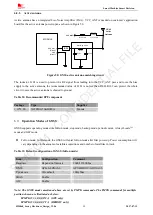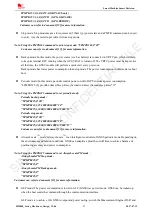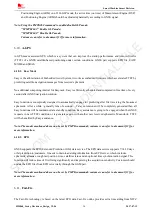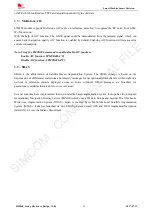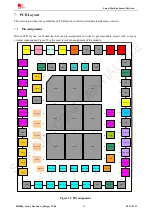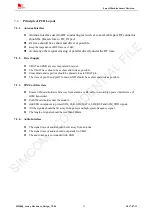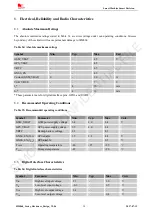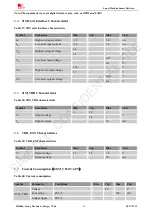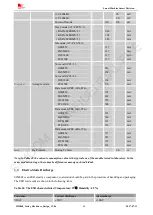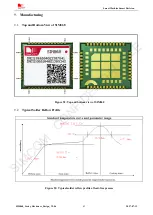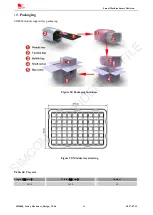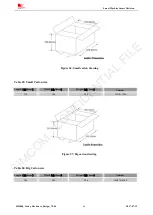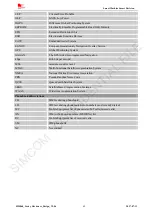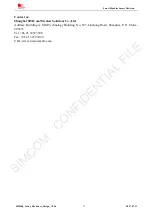
Smart Machine Smart Decision
SIM868_Series_Hardware_Design_V1.06
62
2017-07-13
4
22
±3
±4
5
20
±3
±4
6
18
±3
±4
7
16
±3
±4
8
14
±3
±4
9
12
±4
±5
10
10
±4
±5
11
8
±4
±5
12
6
±4
±5
13
4
±4
±5
14
2
±5
±6
15
0
±5
±6
For the module’s output power, the following should be noted:
At GSM900 and GSM850 band, the module is a class 4 device, so the module’s output power should not exceed
33dBm, and at the maximum power level, the output power tolerance should not /-2dB under normal
condition and +/-2.5dB under extreme condition.
At DCS1800 and PCS1900 band, the module is a class 1 device, so the module’s output power should not exceed
30dBm, and at the maximum power level, the output power tolerance should not /-2dB under normal
condition and +/-2.5dB under extreme condition.
8.9.2.
Module RF Receive Sensitivity
Table 44 shows the module’s conducted receiving sensitivity; it is tested under static condition.
Table 44: Conducted RF receive sensitivity
Frequency
Receive sensitivity
(
Typical
)
Receive sensitivity(Max)
GSM850,EGSM900
< -109dBm
< -107dBm
DCS1800,PCS1900
< -109dBm
< -107dBm
8.9.3.
Module Operating Frequencies
The Table 45 shows the module’s operating frequency range; it follows the 3GPP TS 05.05 technical
specification requirement.
Table 45: Operating frequencies
Frequency
Receive
Transmit
GSM850
869
~
894MHz
824
~
849MHz
EGSM900
925
~
960MHz
880
~
915MHz
DCS1800
1805
~
1880MHz
1710
~
1785MHz
PCS1900
1930
~
1990MHz
1850
~
1910MHz
SIMCOM
CONFIDENTIAL
FILE



